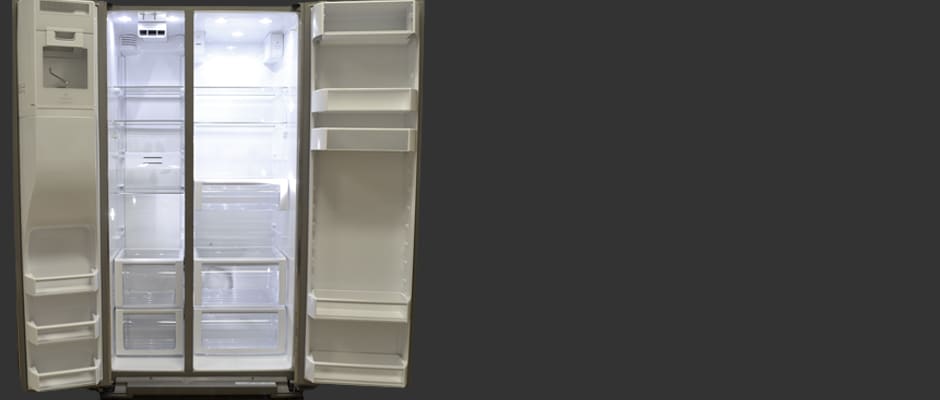Pros
Cons
Introduction
Front
{{section_header}}{{section.name}}{{/section_header}}
The stainless steel front is nothing anyone hasn't seen before. It looks modern and elegant, despite a slightly prominent vertical grain that can be seen when the light hits it at the right angle.
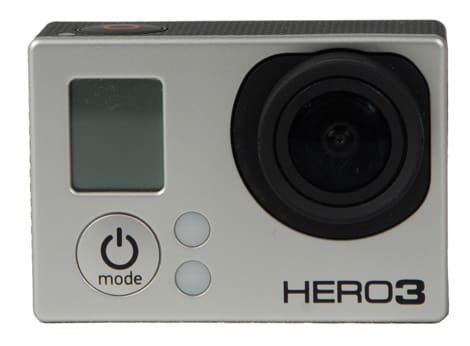
Stainless steel products are particularly susceptible to fingerprints, so consumers with small children should be prepared to wipe it down on a regular basis.

The controls are found on the outside of the freezer door, using a series of small buttons to control internal temperature, the ice and water dispensers, and a number of other fridge functions. Control symbols are lit with blue lights that turn off if you leave the fridge alone.

The handles are thin metal rods that are easy to grip. They quite thin, and make the fridge seem somewhat slimmer than it actually is. They're connected to the fridge at the top and bottom by black plastic rings. Normally, this would cheapen the fridge's exterior, but in this case it actually complements the black control panel, giving it a uniform appearance.

The water and ice dispenser is located just below the control panel on the front of the freezer door. You can turn on a blue light to make late-night pouring easier, and it's both tall and deep enough to allow you to set down an average-sized drinking glass.
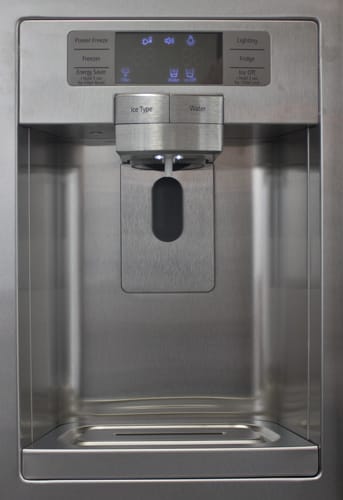
The dispenser is controlled by two paddles: the one on the left is for crushed and cubed ice, while the one on the right dispenses water.
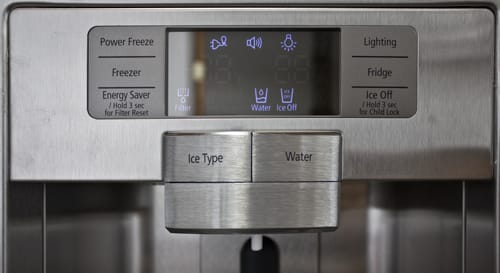
Interior
{{section_header}}{{section.name}}{{/section_header}}
The thin glass shelves and clear plastic with grey highlighting gives the Dåtid a very elegant look. The blue LED lighting adds a very nice modern touch, and generally makes food look more appetizing than it would under traditional yellow lights. The gradual illumination is also easier on the eyes, giving your body a chance to adjust to the brightness.
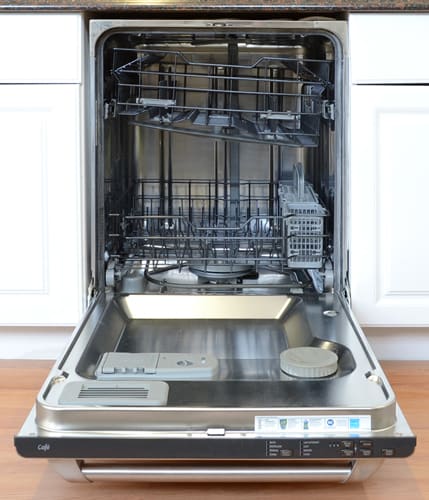
The interior of the CDWT980VSS.
The fridge is broken up in such a way that consumers have a number of options for how they would like to arrange their food. Two adjustable shelves are located at the top, with a third shelf below that. The third shelf serves as a top to a deli drawer, which is set above a fourth, fixed shelf. At the very bottom of the fridge, you'll find a crisper drawer with adjustable humidity controls and a convertible drawer complete with a switch that adjusts the internal temperature, making it suitable for either meat or vegetables.
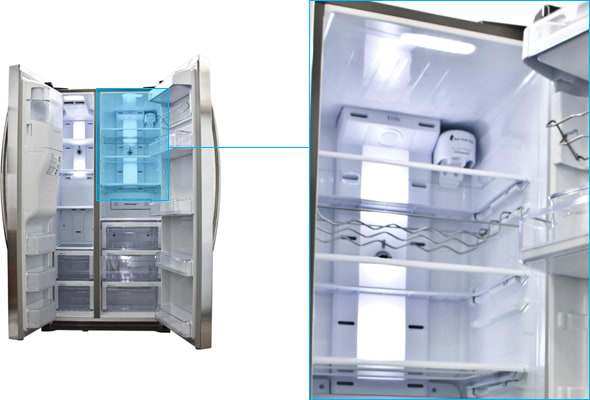
The water filter is located in the upper right corner of the fridge. The shallow nature of a counter depth fridge means it's the filter is easy to get to and simple to change.
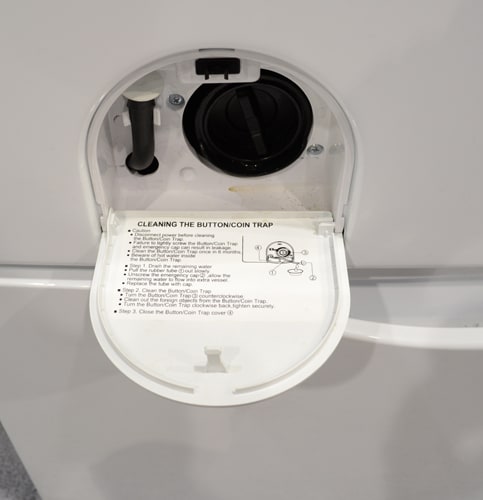
The fridge door has quite a lot of storage options, utilizing a dairy tray at the top, two deep bucket shelves below that, and two shallower shelves at the very bottom. There was one small issue with door storage that we came across, which you can read about on our "Storage Space" page.
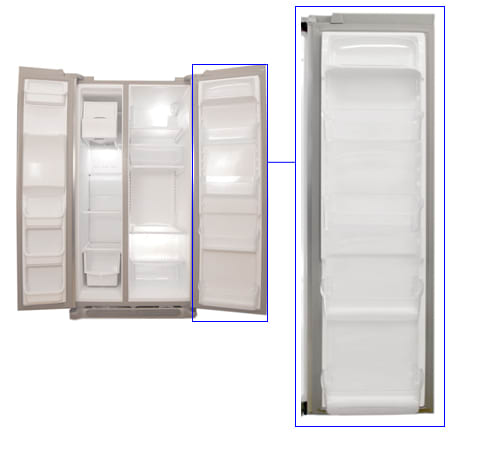
The freezer appears rather thin, but having the ice maker on the door means it's actually more spacious than many other side-by-sides. You have four shelves here, the top three of which are adjustable, and two drawers located at the very bottom. It's a traditional design, but still more visually appealing than usual due to the slim shelves and LED lighting.
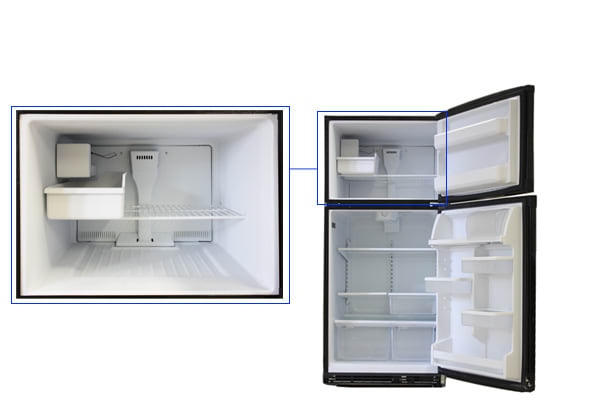
The top two thirds of the freezer door is taken up by the ice maker and its connection to the through-the-door ice and water dispenser. The very bottom contains three small plastic shelves that offer some additional storage.
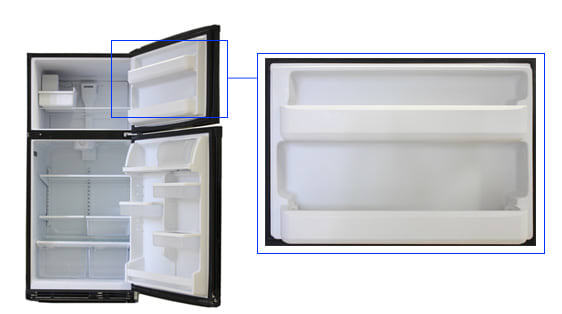
The ice maker is relegated entirely to the freezer door, and is opened by using the catch on its front. The catch is easy to grasp, with an access port wide enough to comfortably fit a hand. It then flips forward, offering access to bulk ice. The whole thing can be removed if, for instance, you want to pour ice into a punch bowl or cooler, and it's quite light and easy to carry.
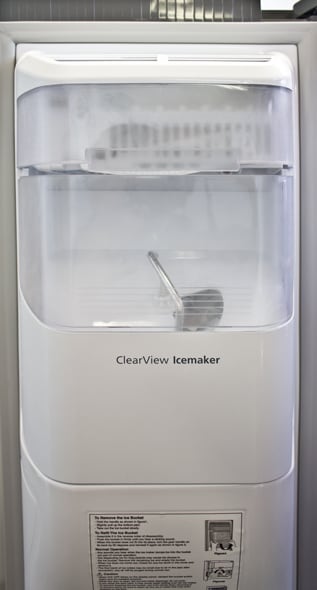
Back
{{section_header}}{{section.name}}{{/section_header}}
The Dåtid's back is consists primarily of a flat metal sheet, with two tubes that send the water to all the necessary parts of the fridge.
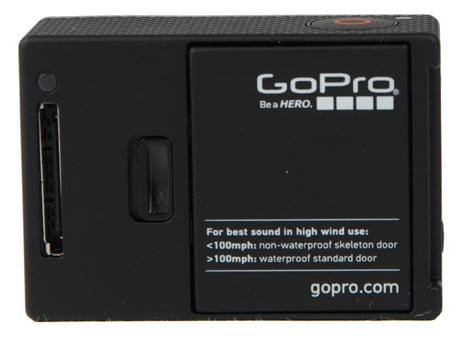
Sides
{{section_header}}{{section.name}}{{/section_header}}
Sides on a counter depth are much shallower than full-sized models. With the handles attached, this fridge is just a hair under 27 inches deep, meaning it's ideal for consumers that want a fridge to line up with shallow counters. If the sides happen to be visible in your kitchen, don't worry: they have a grey matte finish that matches nicely with the stainless front.

Olympus SZ-31MR iHS side views
Running Cost
{{section_header}}{{section.name}}{{/section_header}}
The IKEA Dåtid costs about $68.55 per year to operate. This figure is determined using a standard rate of $0.09 per kW-h, so if you're in an area where energy costs are higher or lower than that, you can adjust accordingly. Generally speaking, though, this fridge runs on the expensive side; if you're looking to stock your kitchen with energy efficient machines, this one isn't for you.
Power Use Per Cu Ft
{{section_header}}{{section.name}}{{/section_header}}
Counter depth fridges are, by their very nature, shallower than full-sized fridges. If the Dåtid were a full-sized fridge and used the same amount of energy, its efficiency ratings would be quite good. Unfortunately, the amount of space that is being cooled is less than average, so it takes this machine 0.14 kW-h to cool every cubic foot of viable storage space inside both compartments. This isn't bad, but it's not going to win this machine any eco-friendly awards compared to some of the other highly energy efficiency models we've tested.
Fridge Temperature
{{section_header}}{{section.name}}{{/section_header}}
While the very top of the fridge matched the exterior thermostat's reading of 37 degrees Fahrenheit, the internal temperature in the fridge gradually warms up as it nears the bottom. Around the crisper drawer area, temperatures averaged five full degrees warmer than what we saw at the top. Generally, produce can be stored at slightly warmer temperatures, but you'll want to make sure items that spoil quickly are kept at the top. Also, fridge temperatures fluctuated anywhere from one half to just over three quarters of a degree over time; this isn't terrible, but it's a much bigger variation than we typically like to see in fridges that cost this much.
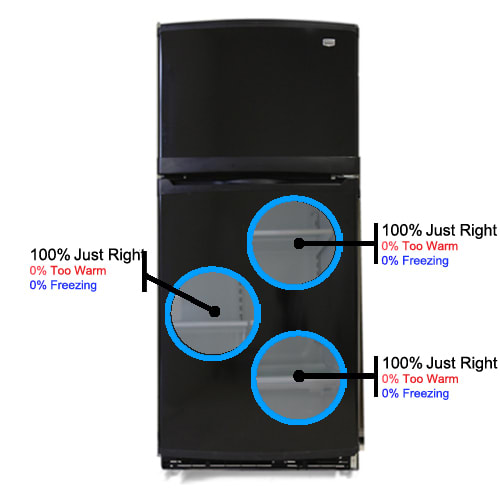
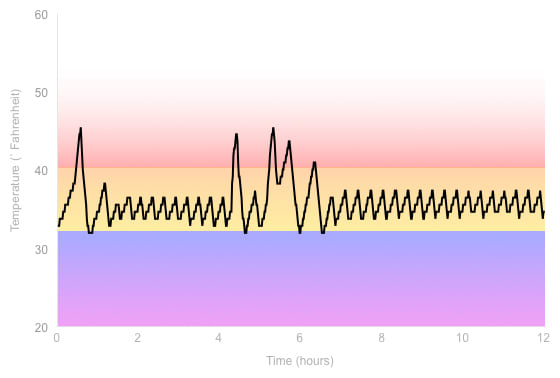
Freezer Temperature
{{section_header}}{{section.name}}{{/section_header}}
Most side-by-sides are subject to temperatures that gradually rise from top to bottom; this was also the case with the Dåtid's freezer. The top portion matched the external thermostat, with an average temperature of about 0 degrees Fahrenheit. The bottom, however, rose to almost four degrees. While the shift is in line with what happened in the fridge compartment, the worst feature with the freezer was the fluctuation over time: we saw shifts of almost three and a half degrees over time, which means food is much more likely to suffer from freezer burn in this model. Don't keep your frozen foods in there for long, otherwise you run the risk of them becoming more frozen than food.
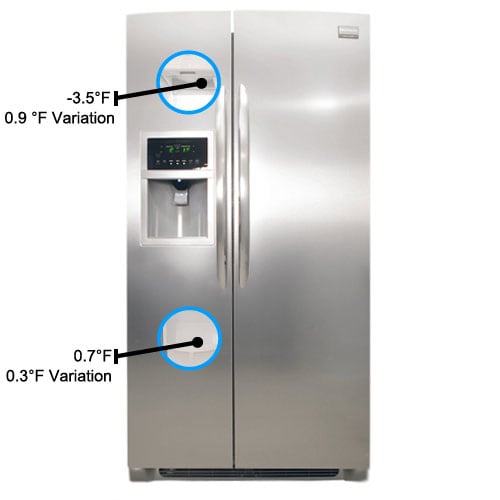
Vegetable Drawer
{{section_header}}{{section.name}}{{/section_header}}
The crisper drawer in this machine was, in a word, inadequate. Our test material lost an average of 0.3 grams of water every hour over the course of three days. Vegetables that lose moisture that quickly are going to spoil much faster; if you want carrots in your salad instead of toothpicks, make sure to eat them quickly. Consumers who purchase this fridge would benefit from adopting the European style of grocery shopping, where you buy only what you need for a given day, in addition to the European style of kitchen design.
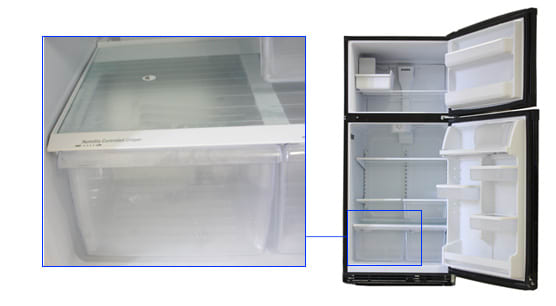
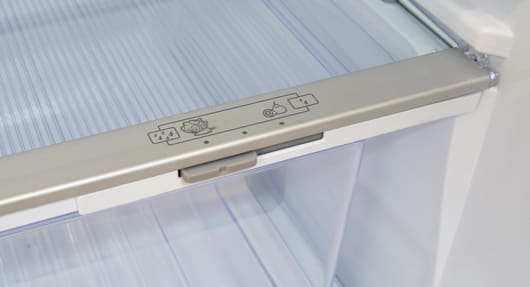
Power Loss
{{section_header}}{{section.name}}{{/section_header}}
It's never enjoyable to find a fridge that fails the power loss test. After unplugging the IKEA Dåtid to subject to an artificial power outage, we found that frozen items thawed after little more than 19 hours. This is very, very poor—a decent freezer should keep items below 32 degrees Fahrenheit for at least 36 hours, if not more. Consumers who live in areas where active weather patterns increase the odds of a power outage shouldn't go with this product, or at least stock their freezer with only a few items.
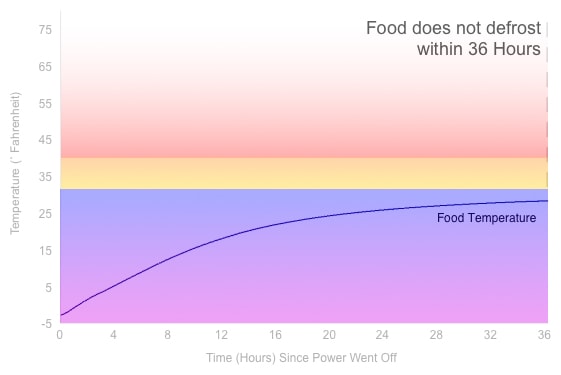
Freezing Performance
{{section_header}}{{section.name}}{{/section_header}}
Adding insult to injury, this particular product takes an inordinate amount of time to freeze a room-temperature item. It took one hour and 52 minutes to bring our test materials down to a frozen temperature, putting this machine alongside other products whose freezing time is long enough to potentially have an adverse effect on the texture of thawed meats. If you're a frozen food nut, or just like having things on hand for times when you can't make it out to the store, you may want to shop around for something else.
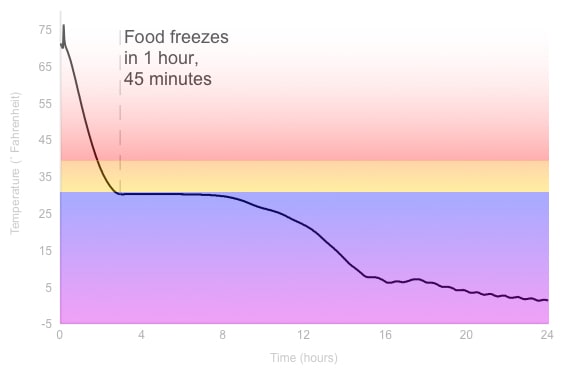
Usable Space
{{section_header}}{{section.name}}{{/section_header}}
Four shelves and three drawers offer plenty of storage options inside the fridge compartment. Keep in mind, though, that counter depth fridges tend to be a bit shallower than your average model. The 9.56 cubic feet available here may not seem like much, but that's actually a decent amount for a counter depth.
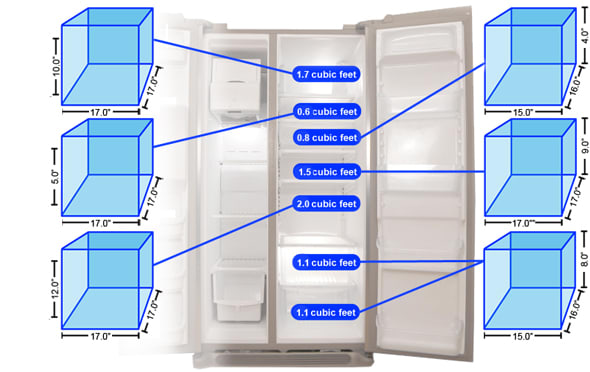
The fridge door offers additional space utilizing a dairy tray and four bucket shelves. The two in the middle can hold gallon-sized containers, while the ones on the bottom are a bit shallower. There is one catch, though, as far as where you can place the deeper shelves: they extend into the fridge cavity far enough to hit the front of the deli drawer. This means that wherever you decide to place that drawer, you have to make sure the door shelves don't overlap, or vice versa.
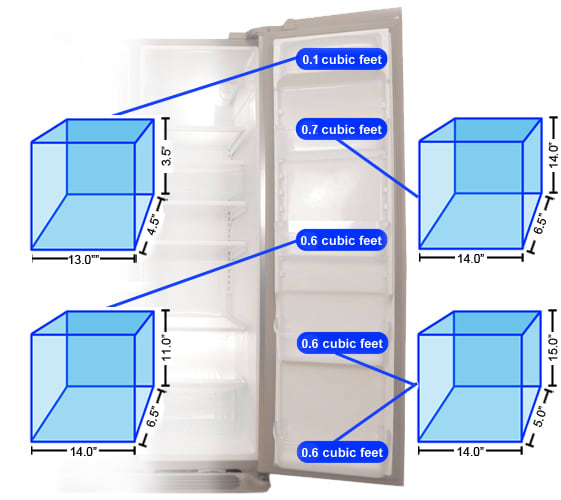
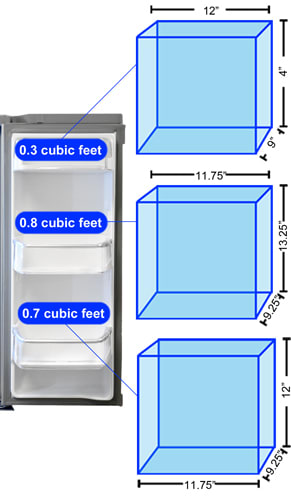
Even if this were a full-sized fridge, the freezer capacity would be impressive. Given that this is a counter depth model, it's almost mind blowing. Four shelves, three of which are adjustable, and two drawers offer a sizable 5.49 cubic feet of usable space.
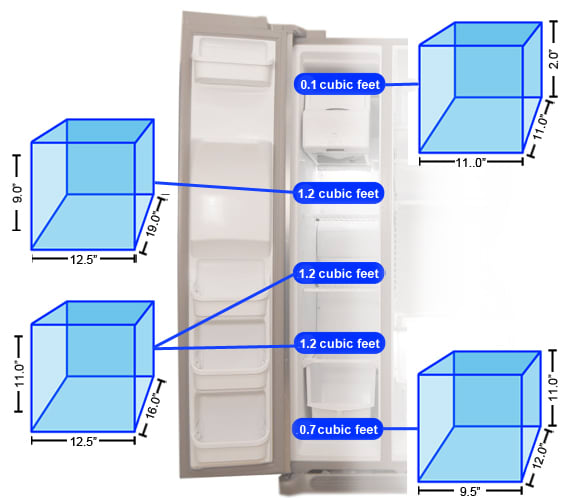
The top of the freezer door is taken up by the ice maker, but the lower portion offers three small shelves that add to the Dåtid's already ample freezer. It's not much, but every bit helps in models that are designed for spacial economy.
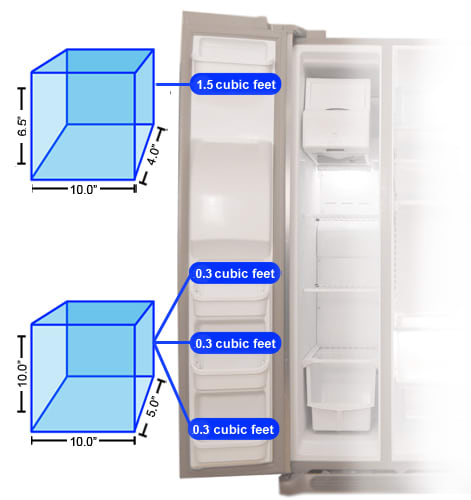
Below are the manufacturers own figures for capacity, and our own measurements for usable capacity. The manufacturers figures do not take account of the shelves, drawers and other removable features, but our measurements do account for the space these take up.
Ease of Access
{{section_header}}{{section.name}}{{/section_header}}
A counter depth fridge is, by nature, shallower than a full-sized model, which means getting to items stored at the back of shelves is quite easy. Drawers slide in and out without a problem, though they don't feel quite as smooth as their high-end appearance might lead you to believe.
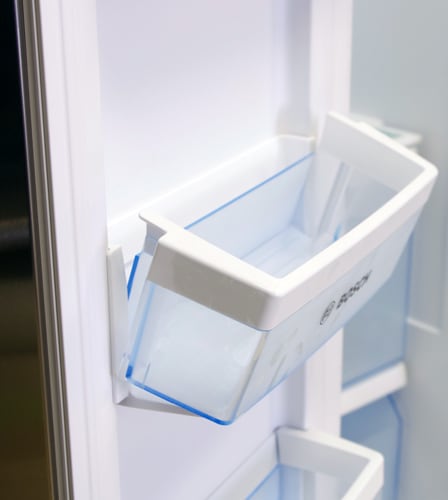
Controls
{{section_header}}{{section.name}}{{/section_header}}
The controls are found on the outside of the freezer door, using a series of small buttons to control internal temperature, the ice and water dispensers, and a number of other fridge functions. Control symbols are lit with blue lights that turn off if you leave the fridge alone.
Controls are very straightforward, with labels that indicate exactly what each button does. The labels may be a bit small for some consumers, but the large blue pictures should make up for that. You don't have to worry about those pictures lighting up your kitchen, either: they fade out after being left alone for a minute.

Water Dispenser
{{section_header}}{{section.name}}{{/section_header}}
The water dispenser cavity is spacious enough for your average drinking glass, and the paddles are set far enough apart that you shouldn't have any problems accidentally hitting the wrong one. The downside is that the paddles don't depress all that far, so actually getting them to dispense their respective liquids may take some getting used to.

Ice Maker
{{section_header}}{{section.name}}{{/section_header}}
The ice maker is relegated entirely to the freezer door, and is opened by using the catch on its front. The catch is easy to grasp, with an access port wide enough to comfortably fit a hand. It then flips forward, offering access to bulk ice. The whole thing can be removed if, for instance, you want to pour ice into a punch bowl or cooler, and it's quite light and easy to carry.

Cleaning
Noise
Other Features
{{section_header}}{{section.name}}{{/section_header}}
{{product.manufacturer_specs['Other Features Photo BROKEN?']}}
Specs
{{section_header}}{{section.name}}{{/section_header}}
The KitchenAid KSC24C8EYY is a rather unusual fridge. The IKEA Dåtid ISC23CDEXY01 is also a rather unusual fridge. Would you be correct in assuming this similarity is caused by the fact that these two products are almost identical? Absolutely. Made on the same platform, these two counter-depth refrigerators offer comparable storage and energy efficiency, as well as performance ratings that almost match score for score. There are some slight design variations between the two, and only the KitchenAid comes complete with new Fresh Flow technology that produces freakishly good moisture retention. Other than really fresh veggies, however, the only other thing the KitchenAid will give you is an emptier wallet. With an MSRP of $2799, it costs $900 more than its IKEA counterpart. If the remarkable produce-preserving technology doesn't impress you, you might as well go for the cheaper option...though without Fresh Flow, there's not a whole lot going for either of these products.
Design
{{section_header}}{{section.name}}{{/section_header}}
You may notice some similarities between these two products. Made on the same platform, the only thing the Dåtid lacks is the Fresh Flow technology (and, as such, the requisite air filter). Its fridge drawer layout is a bit different, as well, since the Dåtid doesn’t need to make room for the KitchenAid’s new technology. Also, the doors on the Dåtid are just regular plastic, unlike the fancy grey and clear bucket shelves on the KitchenAid. Otherwise, they both have LED lighting, an almost perfectly matching control panel, and an on-the-door ice maker.
Performance
{{section_header}}{{section.name}}{{/section_header}}
Both models had some pretty big issues with freezer temperature over time, but in every other respect, the KitchenAid proved to be a far superior model. Fridge temperatures were unusually consistent throughout, freezing items took about 30 minutes less, and it passed our power outage simulation. The biggest selling point for the KitchenAid, though, is its Fresh Flow air filter, which results in some of the best moisture retention we've ever seen. Compared to the Dåtid, which had rather poor moisture loss rates of 0.3 grams per hour, the KitchenAid lost only 0.05 grams.
{{score_bars comp_num="1", scores="Power Use Rating, Running Cost Rating, Fridge Temperature Rating, Power Loss Rating, Freezer Temperature Rating, Freezing Test Rating"}}
Storage Space
{{section_header}}{{section.name}}{{/section_header}}
These two fridges aren't terribly different in size, with nearly the same amount of usable freezer space. The Dåtid does manages to squeeze in a bit more room in the fridge compartment, though, with about 0.75 cubic feet more usable storage compared to the KitchenAid.
{{score_bars comp_num="1", scores="Freezer Usable Space Rating, Fridge Usable Space Rating"}}
Usability
{{section_header}}{{section.name}}{{/section_header}}
Sharing the same physical layout, these products offer equally accessible user experiences. Both have on-the-door ice makers that are very easy to take out, LED lighting that is easy on the eyes, and sliding shelves that facilitate access to all your food products.
{{score_bars comp_num="1", scores="Usability Ease of Access Rating , Usability Controls Rating, Usability Water Rating, Usability Icemaker Rating, Usability Cleaning Rating"}}
Specs
{{section_header}}{{section.name}}{{/section_header}}
The Fisher & Paykel E522BRX is very much a high-end fridge that's somewhat a cross between a counter depth and a compact. Larger than very small fridges but not quite a full-sized, $1609 is backed by quality performance and high energy efficiency ratings as opposed to storage. For another $290, consumers could instead purchase the {{product.name}}, a clearly full-sized counter depth model that looks just as elegant but lacks the performance and energy ratings that make the Fisher & Paykel such a good purchase. If overall storage is your biggest concern, IKEA has it; otherwise, you may not want to write off the smaller option.
Design
{{section_header}}{{section.name}}{{/section_header}}
IKEA's Dåtid is a very attractive stainless steel side-by-side that adds style to a conventional frame. The Fisher & Paykel, on the other hand, banks on elegant novelty; you'd be hard pressed to find another bottom freezer that looked like this one. Both are very appealing to look at, and the strengths and weaknesses of their overall platforms carry different weight for each individual consumer. Objectively, the Dåtid does have a more spacious water dispenser, more accessible ice maker, and a more intuitive control panel.
Performance
{{section_header}}{{section.name}}{{/section_header}}
Both products had some temperature issues with temperature consistency over both space and time, but the Fisher & Paykel is the clearly superior model in this respect. With less of a variation in temperature in the fridge and nearly spot-on readings throughout the entire freezer, this is a much more consistent model. Neither one had very good moisture retention rates, though the Fisher & Paykel proved to be a bit more acceptable in this regard. Also of note is the fact that the F&P is one of only a few products we've tested that managed to freeze room temperature items in just about an hour, roughly half the amount of time taken by the Dåtid.
{{score_bars comp_num="2", scores="Power Use Rating, Running Cost Rating, Fridge Temperature Rating, Power Loss Rating, Freezer Temperature Rating, Freezing Test Rating"}}
Storage Space
{{section_header}}{{section.name}}{{/section_header}}
The Dåtid is marketed as a 23 cubic foot fridge, while the Fisher & Paykel's sticker lists it as a 17.6 cubic footer. As such, the Dåtid is definitely the superior product when it comes to viable storage.
{{score_bars comp_num="2", scores="Freezer Usable Space Rating, Fridge Usable Space Rating"}}
Usability
{{section_header}}{{section.name}}{{/section_header}}
As far as fridge shelf accessibility, the Fisher & Paykel takes the prize. Wide open fridge shelves are always going to be easier to get at than the thinner compartments found in the side-by-side, though having the freezer on the bottom could be an issue for consumers with bad backs or knees. The drawers and trays in the F&P also slid much more smoothly than their counterparts in the Dåtid. The Swedish Dåtid, however, rises above the competition in every other way: the F&P's slightly angled shelves are much more frustrating to take in and out, its freezer-relegated ice maker is definitely harder to get to, and the control panel convoluted enough to merit saving the manual. These are all issues that you wouldn't have to deal with if you owned the Dåtid instead.
{{score_bars comp_num="2", scores="Usability Ease of Access Rating , Usability Controls Rating, Usability Water Rating, Usability Icemaker Rating, Usability Cleaning Rating"}}
Specs
{{section_header}}{{section.name}}{{/section_header}}
The Kenmore Elite 41003 is a very expensive fridge: $3039.99 is one of the larger price tags found on a product that we've reviewed. For that type of money, you get a counter depth fridge that has excellent performance, plenty of storage space (mostly in the fridge), and decent energy ratings for a model of its size. Nonetheless, it's a really big investment. On the other end of the counter-depth spectrum is the {{product.name}}, an $1899 counter depth that looks and feels great, but lacks the performance points to match. If you're on a budget, you may want to avoid both products. If you have the money to spend, though, take the hit up front and purchase the one that will do a better job taking care of your food.
Design
{{section_header}}{{section.name}}{{/section_header}}
While the layout of these two fridges is very similar—both are counter depth and have on-the-door ice makers, for instance—the Dåtid is has a generally slimmer appearance. Thin cylindrical door handles, glass shelves that take up little space yet are still quite sturdy, an ice maker that doesn't bulge out as far into the freezer compartment: these are just some of the components which make IKEA's product seem sleeker and more elegant than the Kenmore Elite.
Performance
{{section_header}}{{section.name}}{{/section_header}}
The Kenmore Elite offers superior temperature consistency over both time and space in each of the two compartments. Excellent moisture retention in the vegetable drawer means this is a model suitable for either fresh or frozen storage. The Dåtid simply cannot compare. The only point at where they meet is with freezing time: both models took almost two hours to freeze a room temperature item, long enough to have a potentially negative impact on the texture of an item once thawed.
{{score_bars comp_num="3", scores="Power Use Rating, Running Cost Rating, Fridge Temperature Rating, Power Loss Rating, Freezer Temperature Rating, Freezing Test Rating"}}
Storage Space
{{section_header}}{{section.name}}{{/section_header}}
Both fridges are counter depth models, meaning they'll have less space than essentially every full sized model with similar height and width. Between the two, the Kenmore Elite has about two cubic more of viable storage in the fridge compartment, but this comes at the expense of the freezer. That section is larger in the Dåtid, which has an extra half of a cubic foot to fit your frozen dinners and bags of ice.
{{score_bars comp_num="3", scores="Freezer Usable Space Rating, Fridge Usable Space Rating"}}
Usability
{{section_header}}{{section.name}}{{/section_header}}
The similar shelf layout means getting to food is equally simple (or difficult, depending on your perspective) between both fridges. Also of note is the fact that they both have on-the-door ice makers. The biggest difference here is actually the control panel. The Dåtid has a standard layout involving glowing pictures which correspond to buttons. The Kenmore Elite using a much fancier layout that implements a touch screen. It may sound more glamorous, but the Kenmore's system is actually rather convoluted and not as useful as its flashy appearance makes it out to be. Points go to the Dåtid for superior intuitiveness.
{{score_bars comp_num="3", scores="Usability Ease of Access Rating , Usability Controls Rating, Usability Water Rating, Usability Icemaker Rating, Usability Cleaning Rating"}}
Conclusion
Energy Efficiency
Its energy efficiency wasn't terribly, but then "not terrible" isn't exactly a mark of glowing praise. It won't create an energy bill that will make your jaw drop, but its not going to be gently on your wallet, either.
Performance
If the price tag were about 50 percent smaller, we might be okay with the Dåtid's performance results. As it is, every test produced disappointing, and sometimes downright bad, results. For this type of money, consumers can do better.
Storage Space
At last, something nice to say. Despite being a counter depth fridge, both compartments were surprisingly spacious. You won't have any trouble storing food to match any dietary preference here.
Usability
LED lights are easy on the eyes, shelves are highly accessible, and the glass shelves are easy to clean. If you combined this sort of easy access with a fridge that had equally good performance, it would be perfect.
Meet the tester
Matthew is a native of Brockton, Mass., and a graduate of Northeastern University, where he earned a degree in English and Theatre. He has also studied at the Gaiety School of Acting in Dublin, Ireland, and spends time pursuing a performance career in the greater Boston and Cambridge area.
Checking our work.
Our team is here to help you buy the best stuff and love what you own. Our writers, editors, and experts obsess over the products we cover to make sure you're confident and satisfied. Have a different opinion about something we recommend? Email us and we'll compare notes.
Shoot us an email